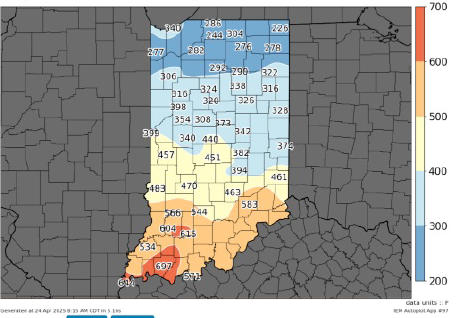
Pest managers throughout Indiana should be scouting their alfalfa for leaf feeding from weevil larva.

Pest managers throughout Indiana should be scouting their alfalfa for leaf feeding from weevil larva.
Increasing interest in practices like cover cropping and soil health includes challenges across a range of agronomic factors, including pest management.
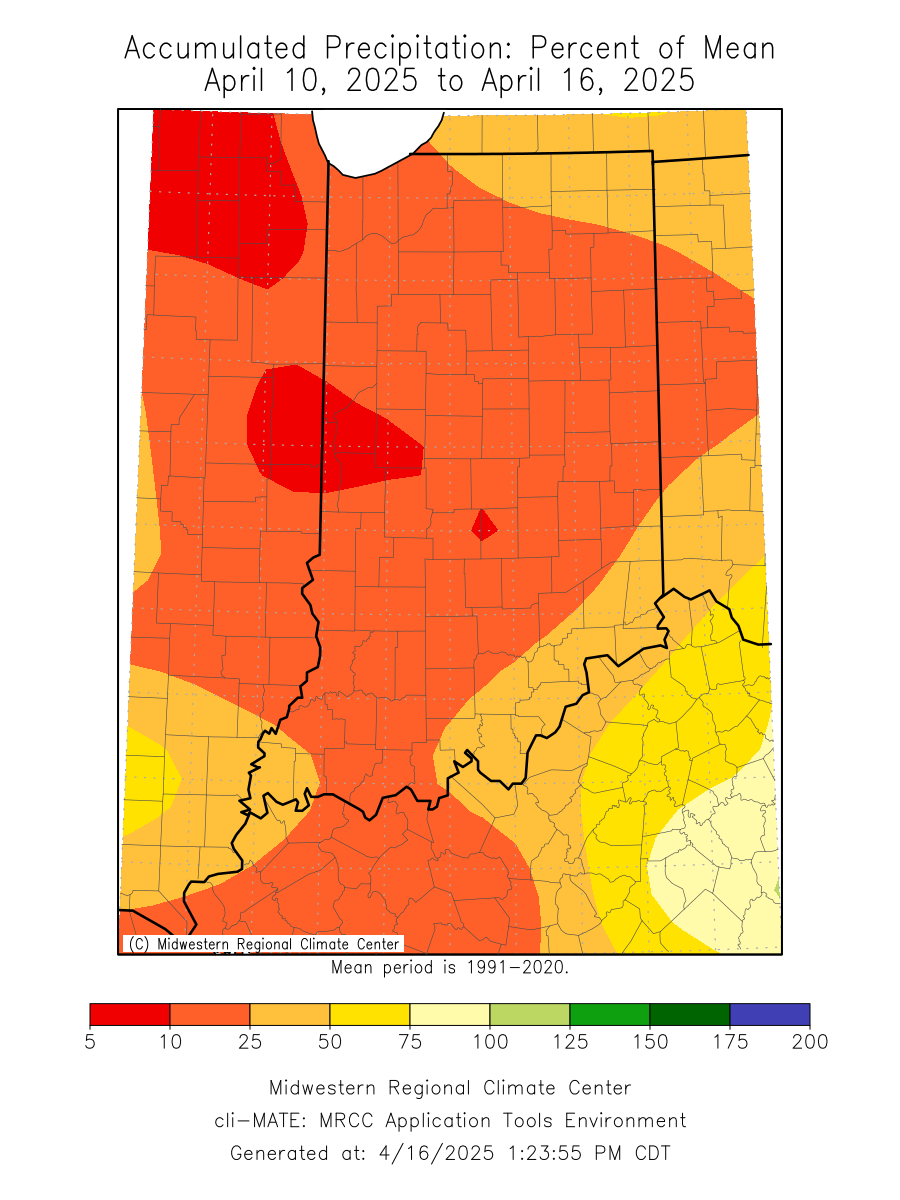
Despite the wet start to the month, the entire state saw less than 50 percent of normal rainfall from April 10 to 16, and in some cases, less than 10 percent of normal rainfall (Figure 1).
Hemp continues to draw interest from stakeholders in Indiana and elsewhere.
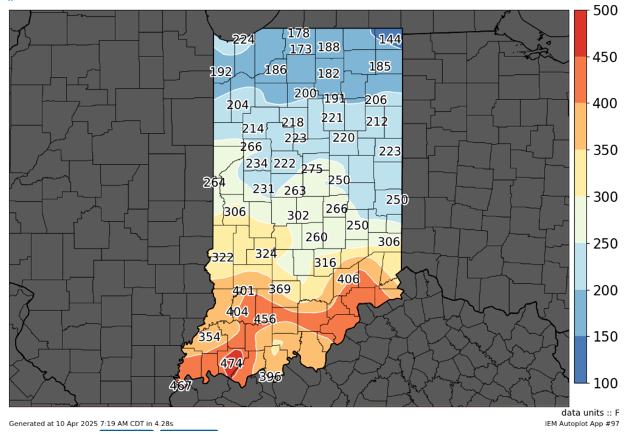
Pest managers throughout Indiana should be scouting their alfalfa for leaf feeding from weevil larva.
Increasing interest in practices like cover cropping and soil health includes challenges across a range of agronomic factors, including pest management.
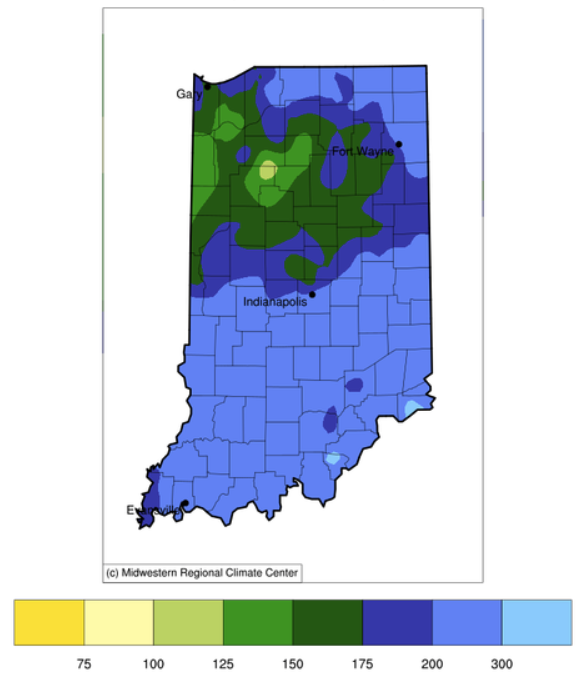
There is the common adage “April showers bring May flowers”. Apparently, Mother Nature utilized a rather liberal definition of “showers” last weekend and the end of last week by dumping over seven inches of rain in southern Indiana.
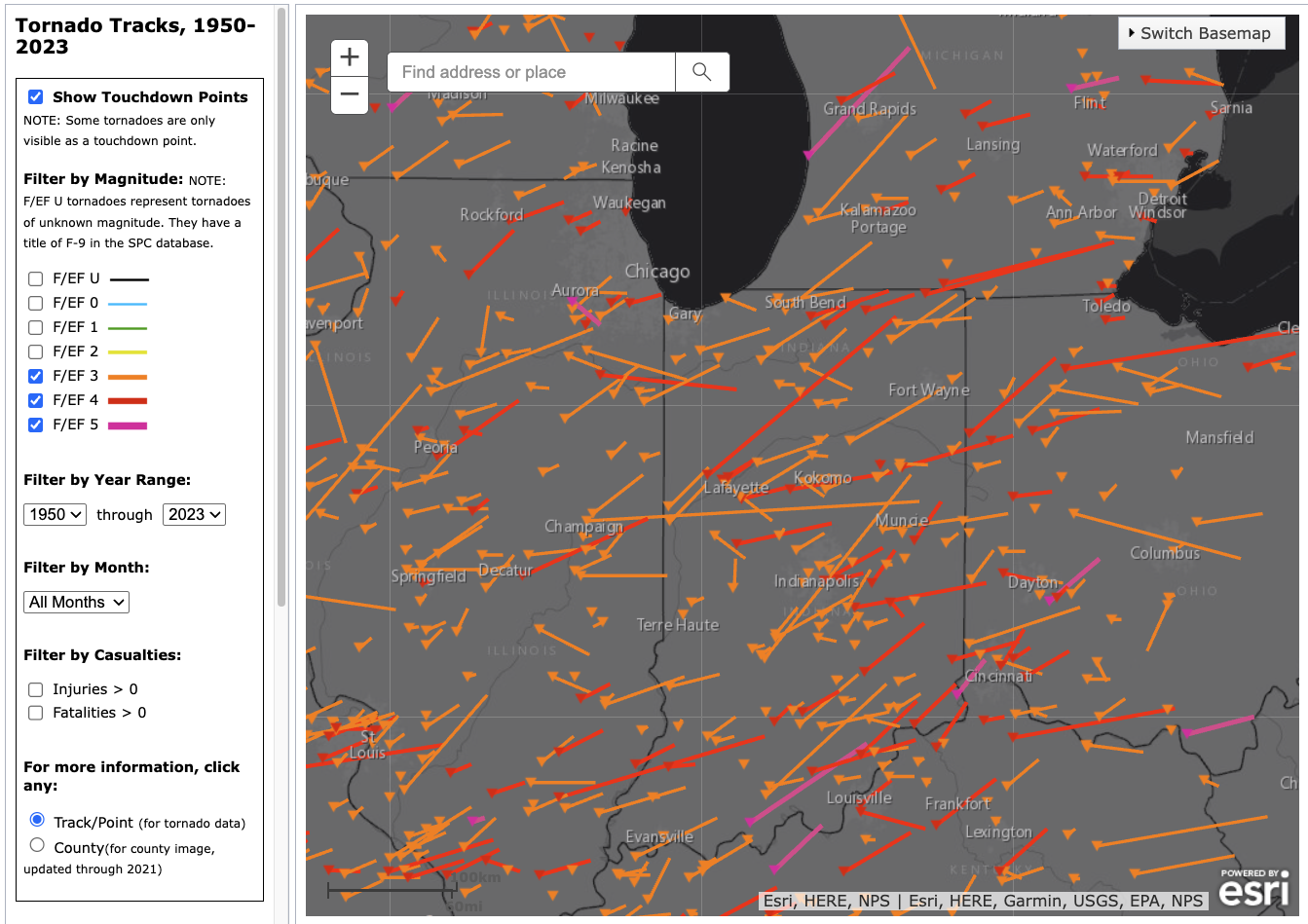
Indiana has already experienced several tornadoes this year with more certainly to come. Of course, this is not unusual since Indiana is often considered on the far northeastern edge of “Tornado Alley”.
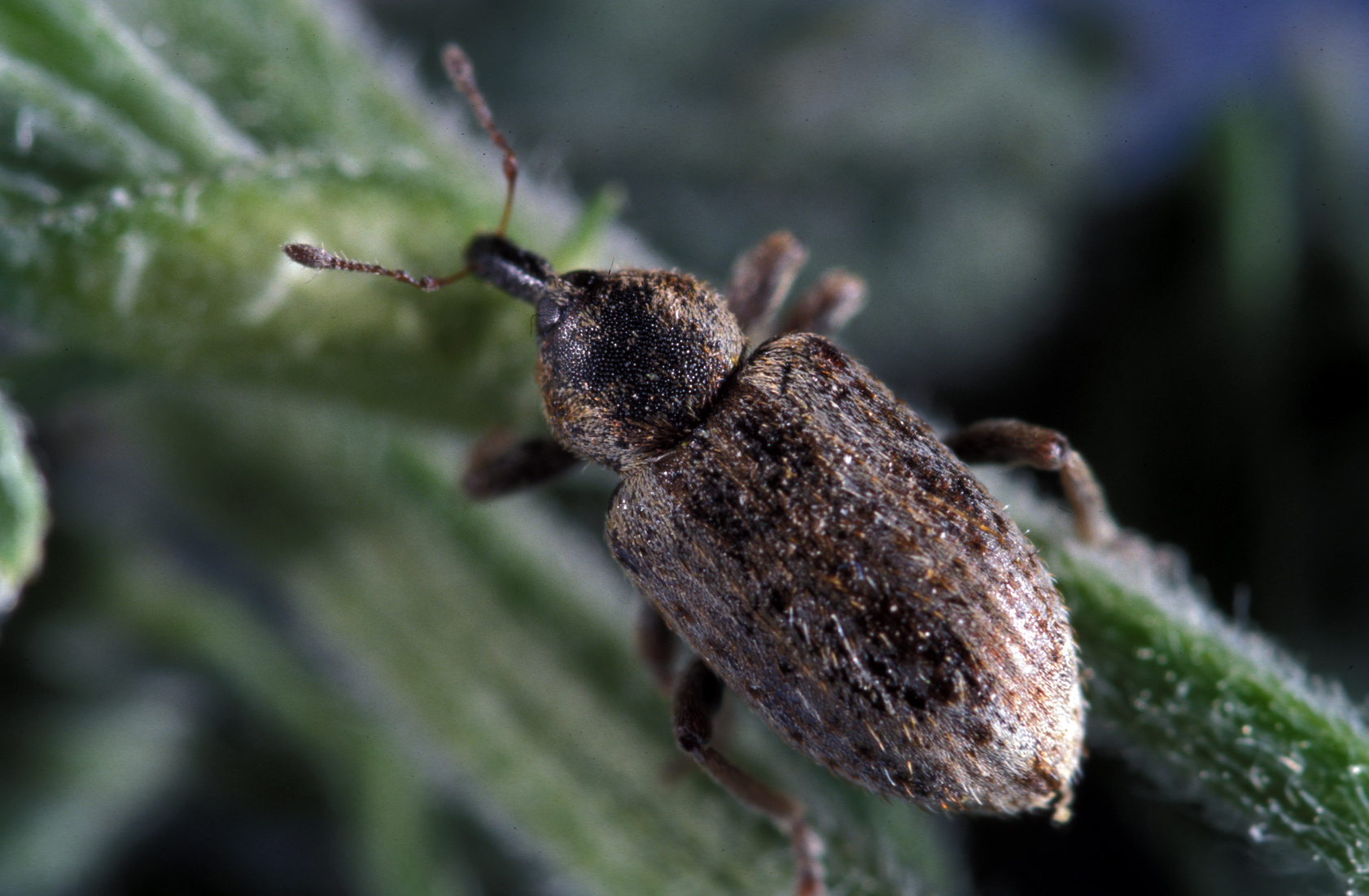
Pest managers in southern Indiana should begin scouting their alfalfa for leaf feeding from weevil larva.
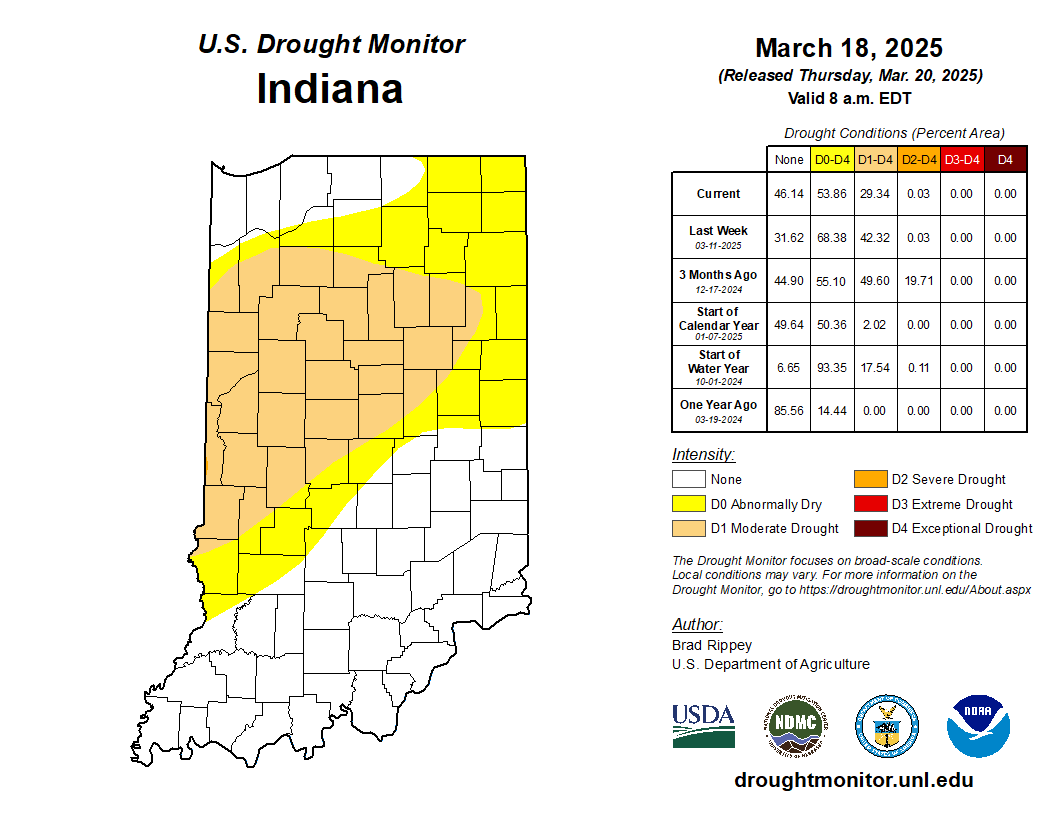
If one looks at the latest U.S. Drought Monitor map for Indiana (Figure 1), one might scratch their head – particularly as it has been raining and the chance for severe weather is in the forecast for this weekend.
© 2025 Purdue University | An equal access/equal opportunity university | Copyright Complaints | Maintained by Pest&Crop newsletter
If you have trouble accessing this page because of a disability, please contact Pest&Crop newsletter at luck@purdue.edu.